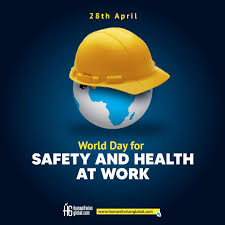Navigating New Challenges: OHS in a Post-Pandemic World.As the world transitions from the acute phase of the COVID-19 pandemic into a new normal, organizations across industries are facing unprecedented challenges in ensuring occupational health and safety (OHS). The pandemic has permanently altered the way workplaces function, ushering in a paradigm shift that has redefined safety standards and expectations.
The Evolving Landscape of Workplace Safety
COVID-19 catalyzed the adoption of stringent hygiene practices, remote work policies, and mental health support systems. These measures have now become the bedrock of modern workplace safety. Yet, with the immediate threat of the virus receding, businesses must adapt to a broader set of risks, including emerging infectious diseases, mental health crises, and new regulatory demands.
“Health and safety professionals are no longer just dealing with physical hazards; they are addressing psychosocial risks, technology-driven changes, and evolving worker expectations,” said Dr. Marina Holt, an expert in occupational health management.
Key Challenges in the Post-Pandemic Era
- Mental Health and Well-being:
The pandemic brought mental health into the spotlight, with employees experiencing heightened levels of anxiety, burnout, and depression. Employers are now tasked with integrating mental health into their OHS frameworks, offering resources such as counseling, flexible work options, and stress management programs. - Hybrid and Remote Work Environments:
The rise of hybrid work models has presented new safety challenges. Ergonomic risks, isolation, and difficulties in monitoring employee well-being from a distance have necessitated innovative solutions. Companies are investing in virtual ergonomic assessments and wellness checks to mitigate these issues. - Technological Advancements:
Technology is transforming OHS practices. Artificial intelligence and wearable devices are being employed to monitor workplace conditions and employee health in real-time. However, these advancements also raise concerns about data privacy and ethical use. - Regulatory Changes:
Governments worldwide are revising occupational health and safety regulations to reflect post-pandemic realities. Organizations must stay ahead of these changes to ensure compliance and avoid penalties.

Opportunities for Growth and Innovation
While challenges abound, the post-pandemic world also presents opportunities for innovation in OHS. Companies are leveraging digital tools to streamline safety protocols, enhance training programs, and foster a culture of proactive risk management.
“The pandemic taught us that agility and resilience are key to navigating crises,” said Alex Moreno, a safety consultant. “Organizations that embrace change and invest in forward-thinking OHS strategies will thrive.”
The Human Element
Amid technological advancements, experts stress the importance of maintaining a human-centered approach to occupational health. Empathy, communication, and trust are critical in building a workplace culture where employees feel valued and safe.
The Road Ahead
As we navigate the complexities of a post-pandemic world, the role of occupational health and safety professionals has never been more crucial. By addressing new challenges with creativity and compassion, organizations can not only protect their workforce but also position themselves as leaders in the evolving landscape of workplace safety.











